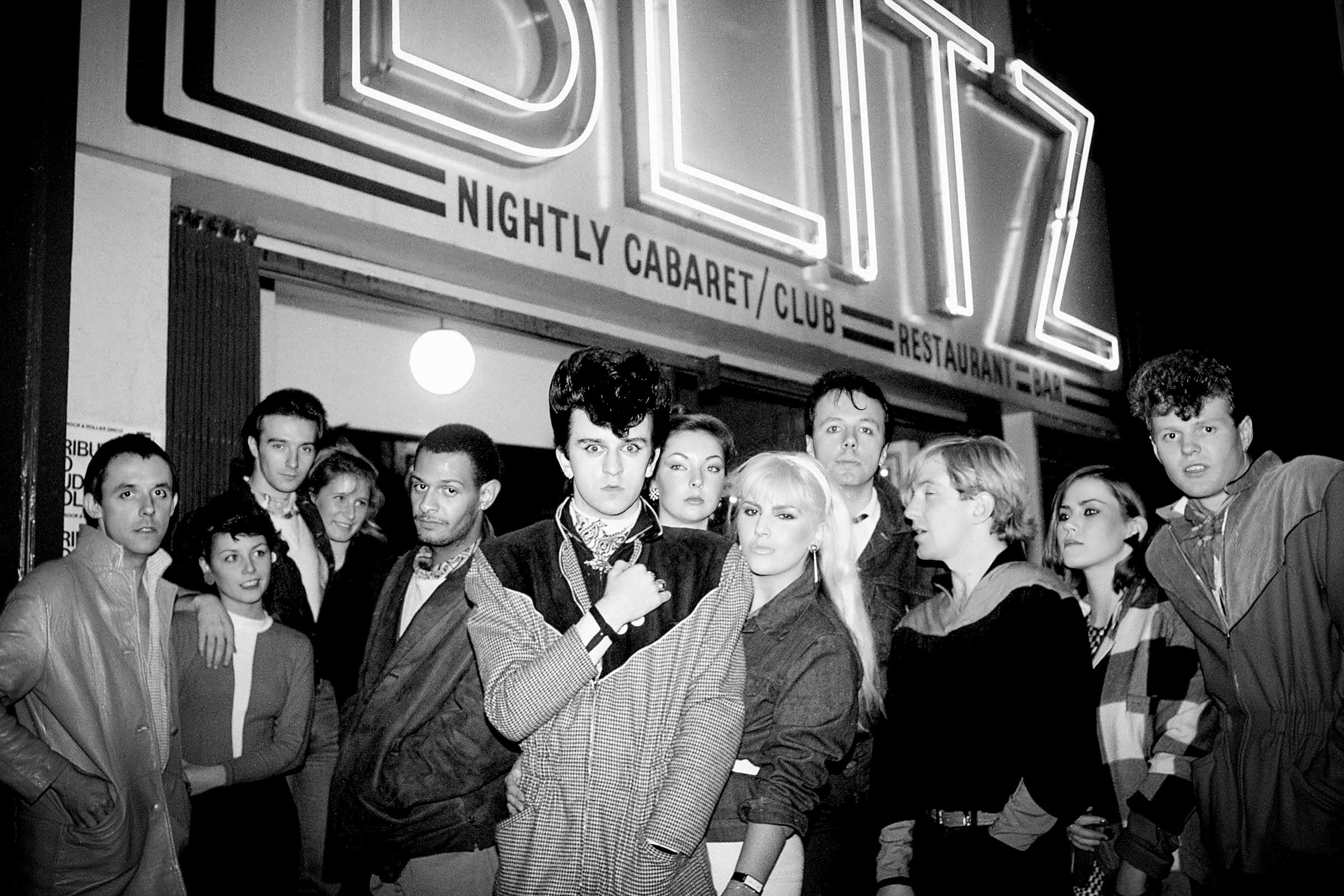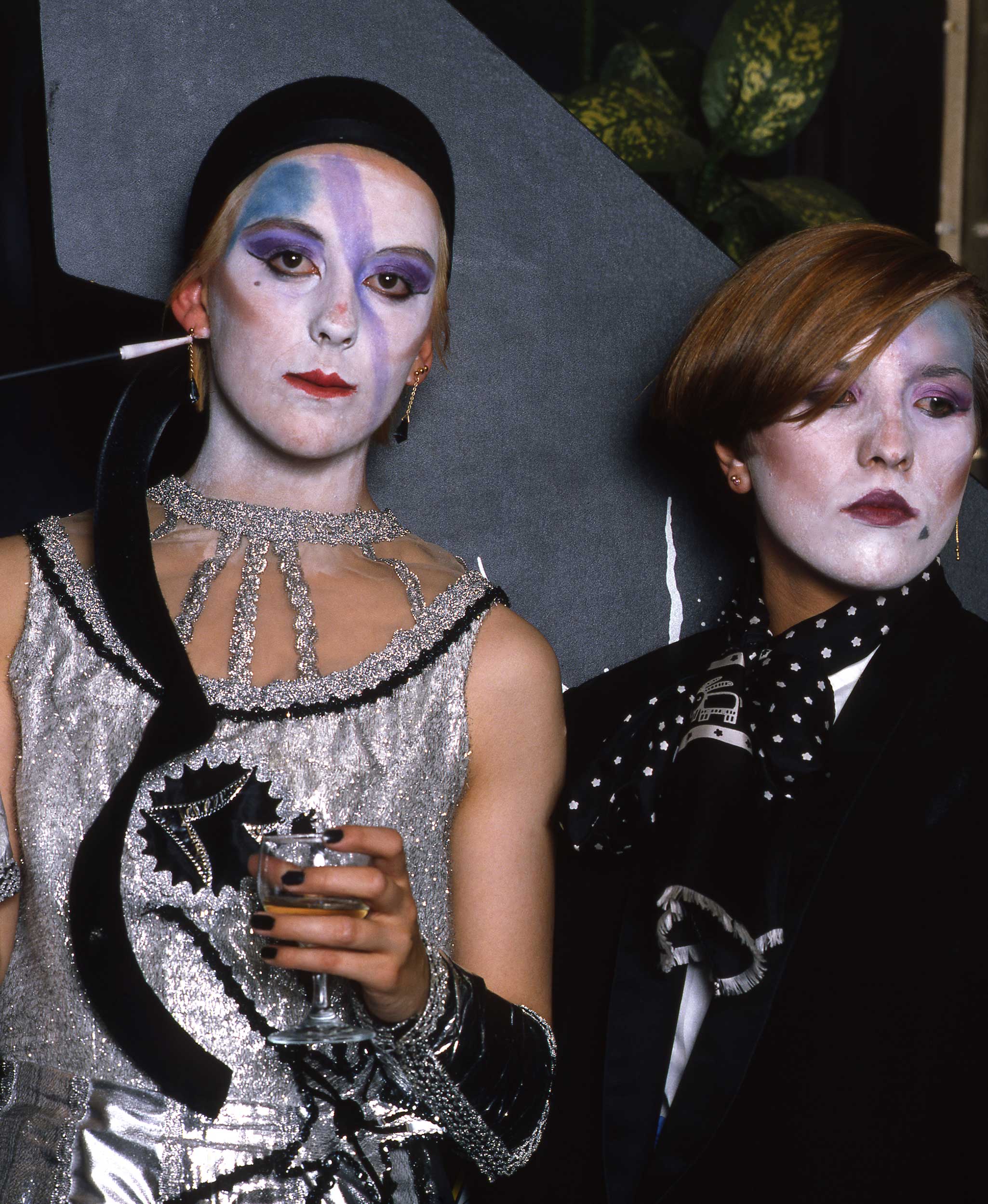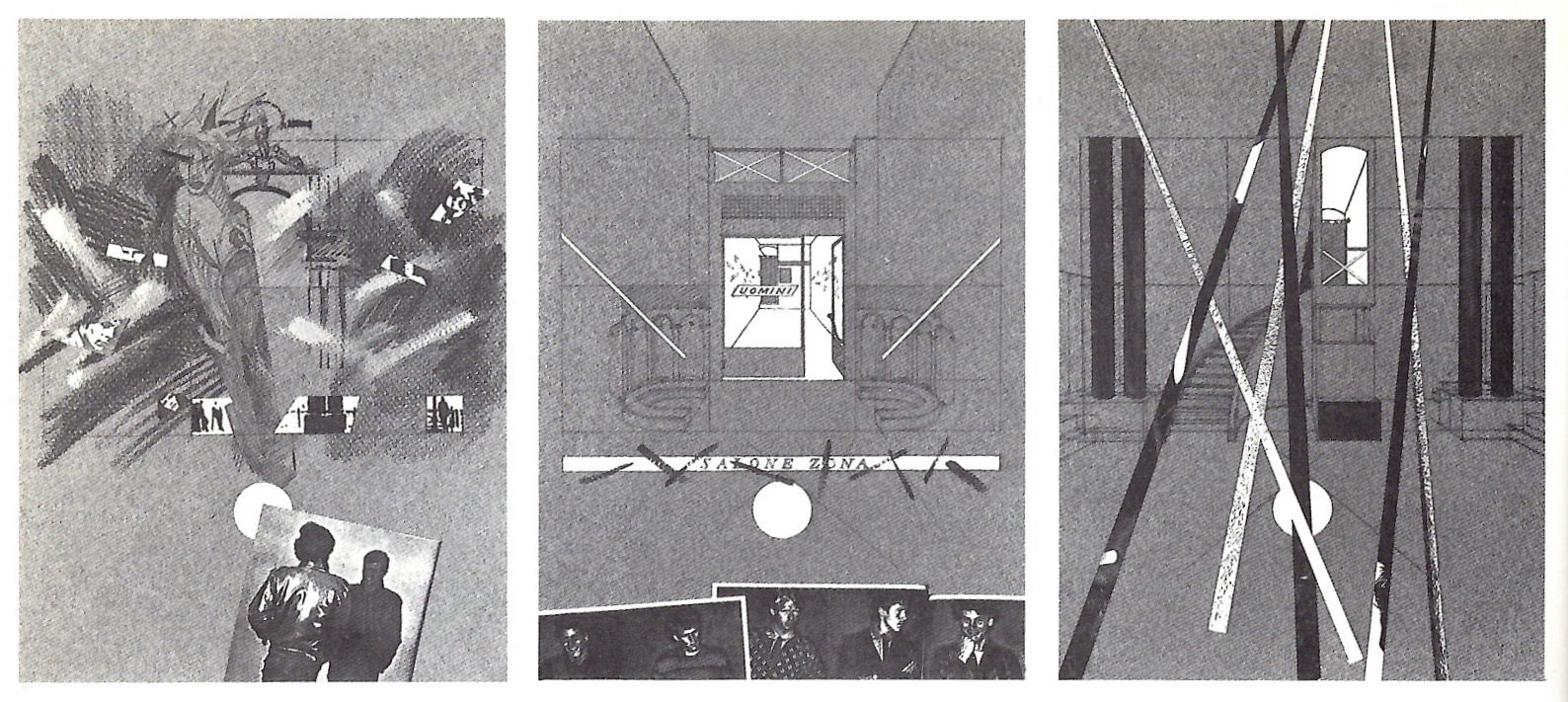
 Boy George attending the Blitz Club, 1980
Boy George attending the Blitz Club, 1980
 Blitz attendees, around 1980
Blitz attendees, around 1980
Creative misfits
At that time, my tribe was mostly art students: artists, fashion designers and filmmakers – mostly gay friends bored with Earl’s Court tackiness and interested in the delights of dressing as a participatory act.
We were inspired by punk but rejected the sugar-spiked Mohican and Worlds End uniform – preferring to make our own clothes, including his-and-his trousers like the ones I made for me and my then partner, Antonio – a student of sculpture at the old Saint Martin’s on Charing Cross Road. Mine were PVC, his were super-baggy. I was a young tutor at the Architectural Association a few streets away behind the Dominion Theatre.
Soho as the centre of the universe
We were gradually being drawn into an enthusiastic club circle that revolved along an axis bounded by music at one end and fashion at the other, all communicated by word of mouth.
Like most of London, Soho was relatively down at heel, but it was our village green. Film companies sat cheek-by-jowl with sex cabarets, and open doors pointed to red-lit parlours. Old Compton Street was not yet a gaudy gay mecca, but it was equipped with everything needed for the fledgling bohemian lifestyle.
The Pollo Bar served curried eggs for £1.50, fabric, buckle and button shops neighboured Camisa the Italian deli that sold Tuscan sausages and Parmigiano, and the Algerian Coffee Shop fed our Moka espresso machines. We’d often bump into Derek Jarman, who lived around the corner next to the Phoenix Theatre.
Who’s who?
Beyond the confines of Soho, Blitz’s legendary hosts Steve Strange and Rusty Egan had a new idea. They wanted to pay tribute to David Bowie and by extension, arty androgyny. Steve did the door, while George O’Dowd and Marilyn took turns to check coats. The crowd was part art school, part would-be musicians, all young offbeats and misfits. The Blitz was a crucible for the creative drive of the time, all the more effective because we were off duty. Tacitly, we were trading creative skills.
Spandau Ballet was born there, setting the music tone, Steven Jones made the hats, Stephen Linnard, John Flett and David Holah made the clothes, Richard Sharah did the make-up.
Meanwhile I channelled this world into my teaching and my own practice: unbuildable buildings with a devil-may-care extravagance that fitted well in this autonomous world.
 Ark Albion © Nigel Coates
Ark Albion © Nigel Coates
From nightclubs to architecture
By then I hadn’t built anything, but I had staged a few exhibitions including Nightlives of the Artists in Florence and the Ideal Home Show at the ICA in London. I was angling to form an architecture group and had a run at that with a collective called Housework. At the Blitz none of that mattered.
There we were both performers and audience: dressed up, dancing and flirting. Antonio and I were frequent enough visitors to be recognised at the door, and though stylistically we couldn’t compete with the likes of Julia Fodor or Marilyn, our mix of homemade and Portobello finds meant we made the cut.
Many of the people I met at the Blitz became lifelong friends, including set decorator Rebecca du Pont, gallerist James Birch, costume designer Dean Bright, filmmaker John Maybury and DJ Princess Julia.
My Blitz days taught me to fold a wide spectrum of creative inputs into my architecture, a total artwork approach – the Gesamtkunstwerk – with many minds, hands and skills.
This drove NATØ (Narrative Architecture Today), the group I started with my students in 1983, and my work in Japan, which incorporated work by my peers, including Tom Dixon, André Dubreuil, Adam Lowe, Stewart Helm, Annabel Grey, Mark Prizeman.
In the Blitz show at the Design Museum, I’m exhibiting three freehand drawings from ArkAlbion, which was staged in the AA Members Room in 1984. Conceived as a living exhibition of architecture, this project focusses on a stretch of the South Bank from Waterloo Station to Lambeth Palace, including the Festival Hall, the Shell Building, St Thomas’s Hospital and the park behind it. Unconsciously I’d applied the nightclub planetary system to the city, busting open all the buildings to express a city in motion, in which everyone could contribute their own creative angle, forming a maelstrom of invention and intervention.
ArkAlbion was one of my first visionary city projects. It anticipated Ecstacity, Mixtacity and Voxtacity, and the most recently one Margherissima that is exhibited at the 2025 Venice Architecture Biennale.
The Blitz’s DNA of mixed creative community underpins all of them. Who’d have thought that a DIY nightspot could help shape anything as big as a city?
Blitz: the club that shaped the 80s is on show at the Design Museum 20 September 2025–29 March 2026
 Nightlives of the Artists © Nigel Coates
Nightlives of the Artists © Nigel Coates